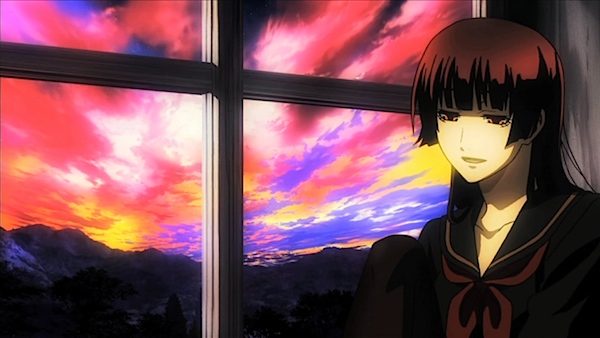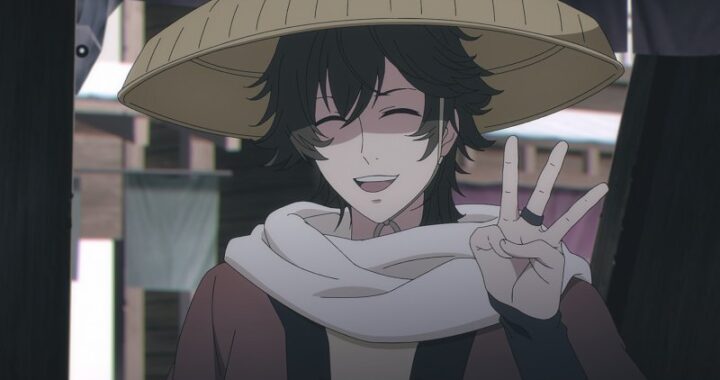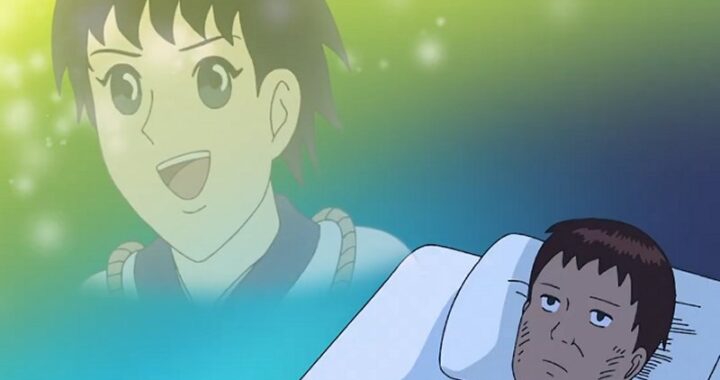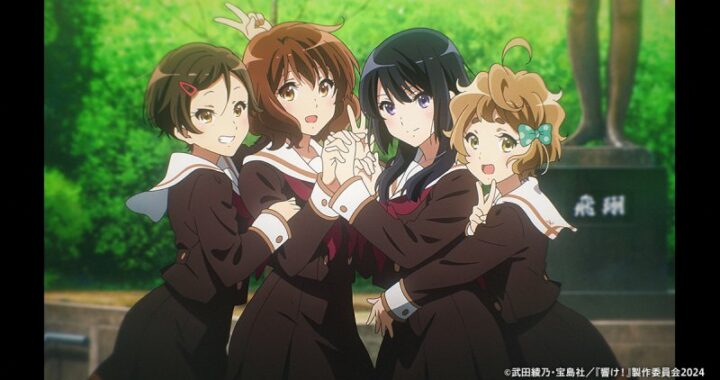BG: Getting in one series that actually had a different ending animation every episode, I have to mention the very adorable Hanamaru Kindergarten. Again, the different endings are sung by the characters’ voice actors, but in this case, they are going more for a variety of ending styles than a particular focus on character appeal. Between them all, there’s a number of themes represented among those we’ve discussed already, such as sleeping in episode 3, a piano performance from Anzu in episode 7, and even an umbrella in episode 8. They may have differing means of achieving it, but the one goal they do have in common is putting a smile on your face. Such a great fit for the series.
BT: Aha! Another umbrella sighting! ☂
GBS: Then there are times when the animation team decides that an episode is so important on its own that either a change is made to what is otherwise the standard ending or even a special ending sequence, different from the normal one or ones, is required.
BG: Sometimes these can be focused on a single character after an emotional or important episode, for example in Tenchi in Tokyo episode 24. Important revelations are made about the character Sakuya, and in place of the normal ending is a “highlight reel” showing scenes of Sakuya throughout the series with a song by her voice actress Mayumi Iizuka.
On other occasions, the same ending animation may play, but there might be changes in the songs, such as Moe singing along with Marin in Brigadoon episode 21. The episode serves as an emotional finishing point of a sub-arc about Moe’s friendship with Marin, and the changed song really tops that off quite nicely. Somewhat ironic in its case, as the cheery ending often clashes with the mood of cliffhangers in many other episodes of the series. Also, the ending of Dusk Maiden of Amnesia episode 11 uses a Yuuko version of the ending song sung by Yumi Hara rather than the standard version sung by Aki Okui, appropriately following the events of Yuuko’s tragic past becoming known.

GBS: I’ve noticed that sometimes there is the “official” version of opening or ending themes as well as a seiyuu version, normally with the seiyuu singing as the character he/she plays. You’re right that we often get to hear these alternate versions of the songs sometimes at the end of episodes that are connected to a particular character who was prominent in the episode just ended.
So, what other kinds of special endings come to mind?
BG: I’ve talked about a “highlight reel” being used for a special character ending, but the same technique is used much more often to highlight memorable scenes throughout the whole series on the last episode of a season or series, also in place of the regular ending.
GBS: One that comes immediately to mind is Kaleido Star. We get a complete look at Sora’s antics from her rather troubled beginning up through her triumphant arrival as a true “star.” A very interesting version of the highlight reel is a literal highlight real that runs at the end of each installment of the 4-part OVA to Steel Angel Kurumi, called Steel Angel Kurumi Encore. The main events of the short episodes are show in what looks like an actual film reel, though the cut-out holes of real film are replaced with miniature versions of the various characters’ heads.
G.B. Smith
Greg Smith has been writing anime reviews and a review column on anime dubbed into English for several years, first at AnimeOnDVD and now for The Fandom Post. His occasional column on English anime dubs, Press Audio, appears whenever he comes across a dub worthy of a closer look. He is also the deputy editor for our seasonal and year end retrospectives.




